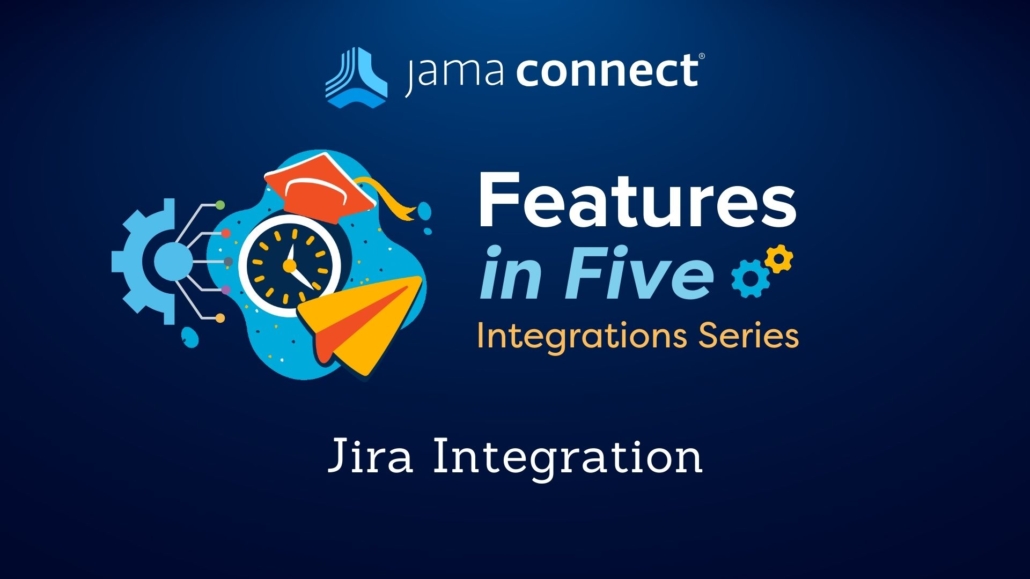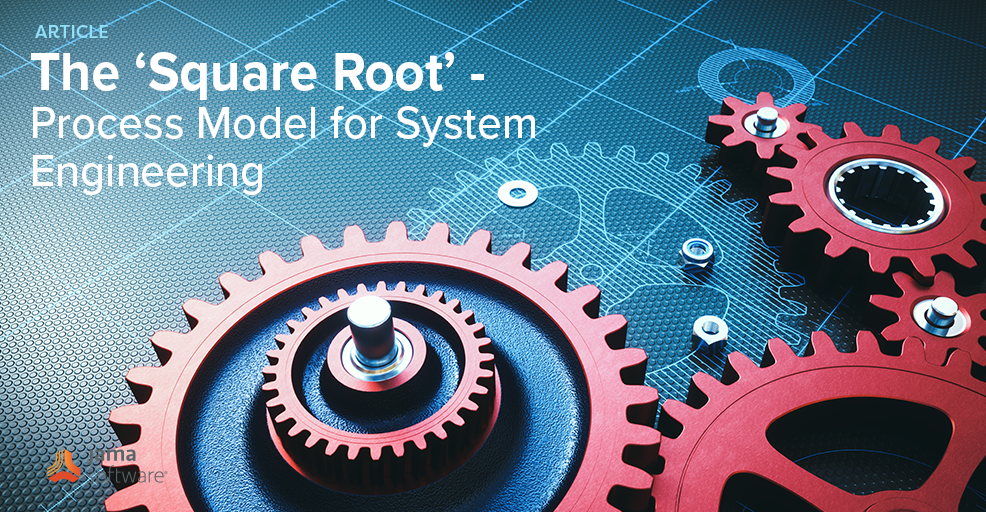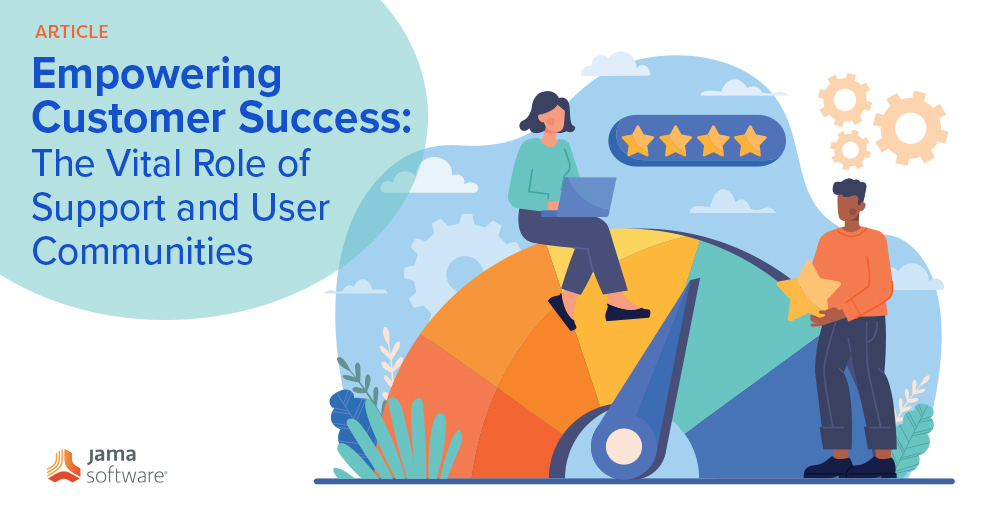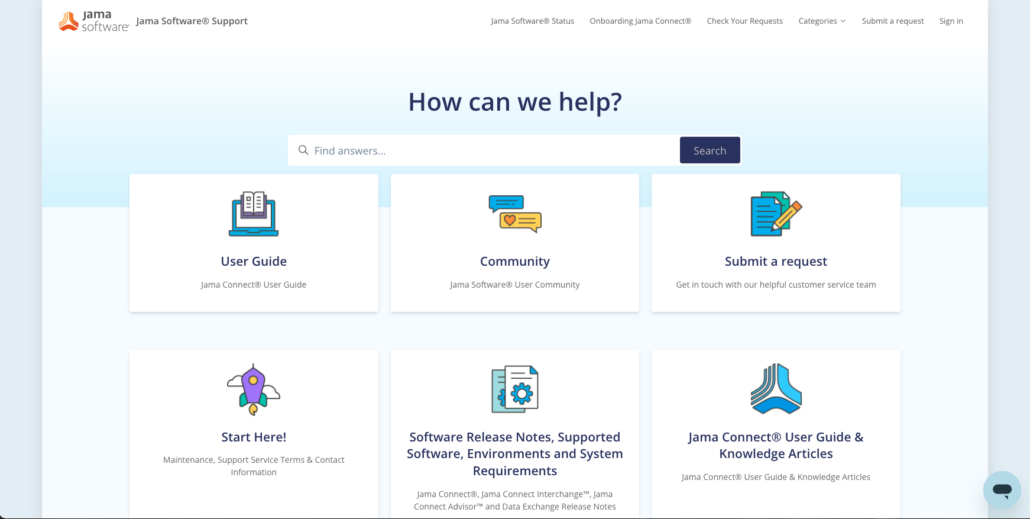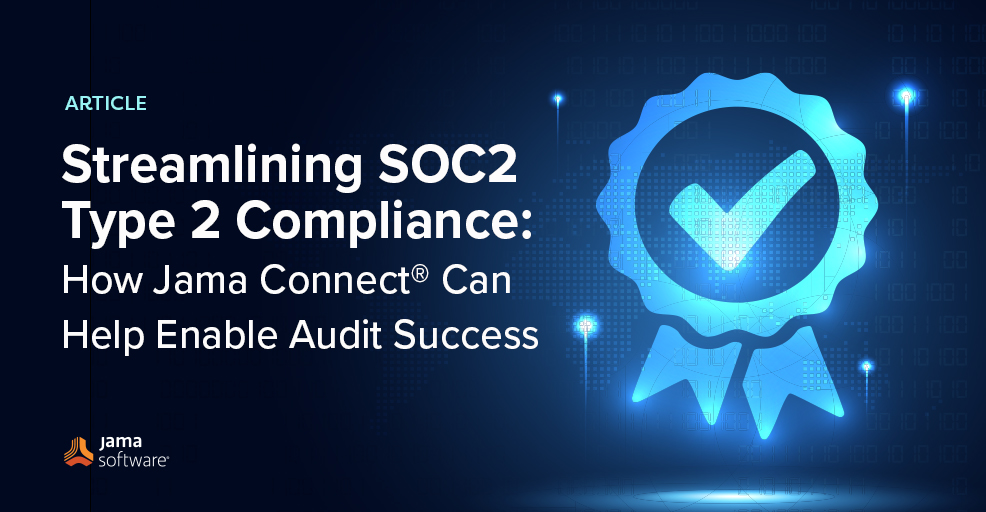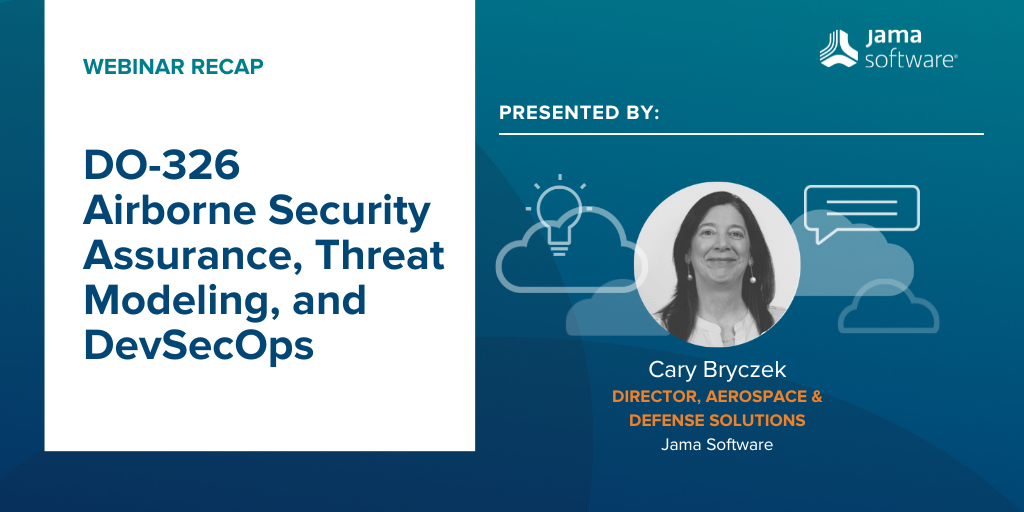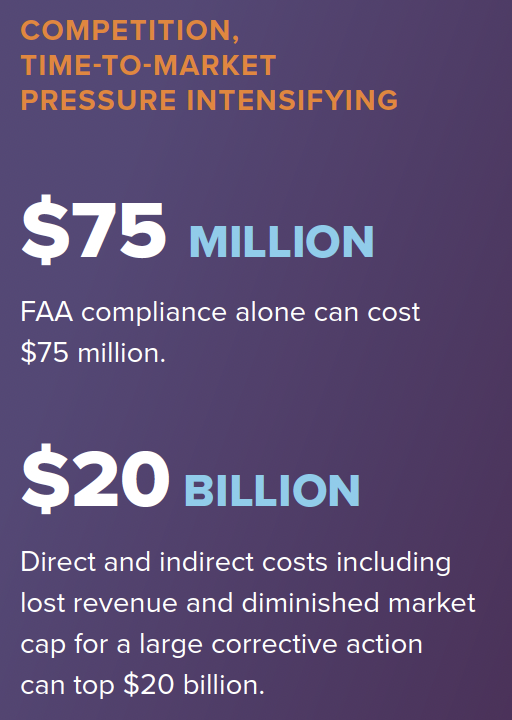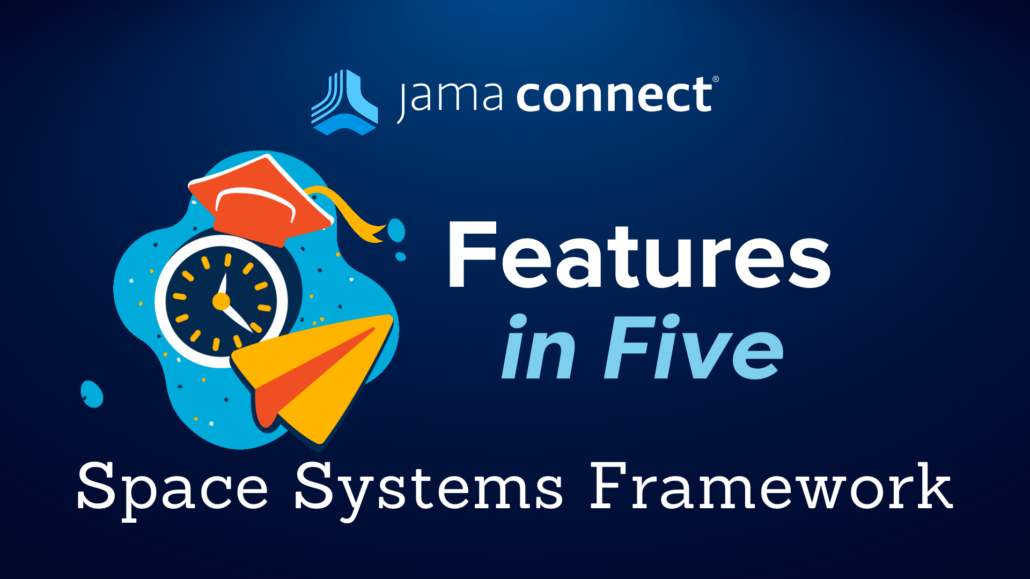
Ready, Set, Launch: Welcoming the New Jama Software® User Community
We are excited to announce the launch of our new Jama Software® User Community! Hosted on Higher Logic’s Vanilla platform, this community will be based on their successful framework model and will serve as an improved hub for collaboration, discussion, and support. To learn more about the history of Jama Software®’s user community, which was first created in 2015, visit Empowering Customer Success: The Vital Role of Support and User Communities.
In preparation for the launch of this exciting new space, we interviewed Amanda Jennewein – Senior Manager of Customer Support at Jama Software, to find out what existing and new user community members can expect from this transition.
What were the main reasons or goals for relaunching the Jama Software Customer Community?
Amanda Jennewein: Launching the new Jama Software® User Community is a strategic initiative aimed at improving customer engagement and satisfaction, driving innovation, and strengthening the company’s brand presence in the digital space.
- Enhanced Customer Engagement: Our goal is to strengthen customer relationships and create a supportive ecosystem by fostering a sense of belonging and collaboration. Building a vibrant online community allows customers to engage with each other, share experiences, and exchange best practices.
- Knowledge Sharing and Support: As we recently shared, a community is valuable for users to access documentation, tutorials, and troubleshooting guides. By centralizing knowledge and expertise, Jama Software empowers customers to find solutions independently and receive support from peers and experts within the community.
- Feedback Collection and Product Improvement: The community provides a channel for customers to provide feedback, suggest enhancements, and vote on feature requests. By soliciting input directly from users, we gain valuable insights into customer needs, preferences, and pain points, which can inform product development and roadmap prioritization.
- Customer Success and Adoption: A thriving community contributes to customer success by facilitating collaboration, learning, and adopting Jama Software products and solutions. We aim to drive user satisfaction, retention, and advocacy by promoting engagement and self-service support options.
- Brand Building and Thought Leadership: Hosting a vibrant community reinforces our position as a software development and requirements management leader. By curating valuable content, facilitating discussions, and showcasing customer success stories, we strengthen our brand reputation and thought leadership within the industry.
When will the new community be available for users to see?
Jennewein: The new community was officially launched on March 18, 2024. Users can now join the new community and explore its features.
RELATED: Jama Software® Discovery Center
What improvements can users anticipate from our new community?
Jennewein: The migration to Higher Logic Vanilla represents a significant upgrade for the Jama Software Customer Community, offering improved usability, performance, collaboration tools, and integration possibilities. These enhancements allow users to anticipate a more engaging and productive community experience.
- Enhanced User Experience: Vanilla offers a modern and intuitive user interface, making it easier for community members to navigate, discover content, and engage with others. The platform’s clean design and user-friendly features create a more enjoyable and efficient user experience.
- Improved Performance and Reliability: Vanilla’s infrastructure is designed to deliver better performance and reliability than the previous platform. Users can expect faster page loading times, smoother browsing experiences, and minimal downtime, ensuring uninterrupted access to community resources and discussions.
- Streamlined Content Discovery: Vanilla provides robust search functionality and content categorization tools, enabling users to find relevant discussions, articles, and resources quickly. Advanced search filters and tags make locating specific topics of interest easier, facilitating knowledge sharing and collaboration within the community.
- Federated search: Vallina connects to other tools to surface relevant content, regardless of where it lives.
- Enhanced Customer Support Integration: Further integration of the community with customer support processes and systems to streamline issue resolution, facilitate peer-to-peer support, and provide faster access to assistance. Automation and self-service options will empower users to find solutions independently and reduce their dependency on traditional support channels.
Will users from our previous community notice any significant changes? Will they still be able to find the same information as before?
Jennewein: Overall, the structure and organization of the new customer community will prioritize usability, accessibility, and engagement, aiming to provide a valuable and enriching experience for users seeking support, knowledge sharing, and collaboration within the Jama Software community.
You can see the Vanilla Success Community here, https://success.vanillaforums.com/
- Homepage: The homepage serves as the central hub of the community, featuring essential announcements, latest discussions, and popular topics. It provides a snapshot of community activity and directs users to relevant sections and resources.
- Discussion Categories: Discussions are typically organized into categories or topics based on themes, product features, or user needs. Precise categorization helps users find discussions relevant to their interests and expertise, promoting participation and knowledge sharing.
- Digital Onboarding Guide: A dedicated section for articles, guides, tutorials, and other resources.
- Q&A: Users can ask and answer questions within a community to facilitate self-service support and develop brand advocated.
- Ideation: Provide feature requests while collaborating with peers by voting and commenting on ideas.
- Events and Announcements: Information about upcoming events, webinars, product updates, and community announcements may be featured prominently to keep users informed and engaged.
- User Profiles and Recognition: User profiles allow community members to personalize their experience, showcase their expertise, and connect with peers.
- Search Functionality: Robust search functionality lets users quickly find relevant discussions, articles, and resources. Advanced search filters and tagging systems improve the discoverability and accessibility of content.
- Community Guidelines and Support: Clear guidelines and rules for community participation help maintain a positive and respectful environment. Support resources, FAQs, and help documentation should be readily available to assist users and address any issues they encounter.
- Verticalized Resources: Solution spaces for Automotive, Medical Devices & Life Sciences, Robotics, and Airborne Systems will be available to customers who have purchased additional licenses. These spaces offer industry resources, downloadable materials, and specific discussion areas.
- Additional Downloadable Resources: Customers may purchase additional licenses to access downloadable content for:
- Data Exchange
- Jama Validation Kit (JVK) – Test cases and coverage reports
- Functional Safety Kit (FSK) – ISO certifications, defects, and safety manuals.
- Jama Connect Interchange™
How will the new community be moderated and managed to ensure a positive experience for members?
Jennewein: To ensure a positive experience for members, the new community will be moderated and managed through a combination of proactive measures, clear guidelines, and responsive support.
- Clear Community Guidelines: Clear guidelines and rules for community participation help maintain a positive and respectful environment.
- Designated Moderators: The community will have moderators responsible for overseeing discussions, enforcing community guidelines, and addressing any issues or concerns members raise. These moderators will be experienced and knowledgeable individuals who can maintain a respectful and inclusive environment within the community.
- Prompt Response to Concerns: Our community encourages its members to report any concerns or violations of community guidelines to the moderators. Upon receiving such reports, the moderators will promptly investigate the issue thoroughly and take appropriate action to address the concern. This may involve removing inappropriate content, issuing warnings, or taking other necessary steps to ensure that our community remains a safe and welcoming place for all.
- Transparent Communication: Moderators will communicate openly and transparently with community members, explaining decisions and actions. Transparent communication helps build trust and confidence among members and demonstrates a commitment to fairness and accountability.
- Educational Initiatives: Besides taking enforcement actions, moderators will also undertake educational initiatives to encourage positive behavior and cultivate a culture of respect and collaboration among community members. This may include providing guidance on best practices for constructive communication, conflict resolution, and effective participation.
RELATED: Carnegie Mellon University Software Engineering Program Teaches Modern Software Engineering Using Jama Connect®
How will we address and resolve issues or concerns raised within the customer community?
Jennewein: Support resources, FAQs, and help documentation will be available to assist users and address any issues they encounter in partnership with moderators and the Online Community manager.
What plans does the company have for any additional future growth and evolution of the customer community?
Jennewein: The company’s plans for future growth and evolution of the customer community are focused on creating a vibrant, inclusive, and value-driven ecosystem that empowers users, fosters collaboration, and drives customer success with Jama Software products.
- Expansion of Community Features: Continuously evaluate and introduce new features and functionalities to enrich the community experience.
- Community Advocacy and Ambassador Programs: Identify and cultivate community advocates and ambassadors passionate about Jama Software products and actively contribute to the community. Recognize and reward these advocates for their contributions and empower them to champion the community, share their experiences, and advocate for the brand.
- Feedback-driven Iterative Improvements: Continuously solicit feedback from community members through surveys, polls, and feedback forums to identify areas for improvement and prioritize future enhancements. Use this feedback to inform iterative updates and enhancements to the community platform, ensuring that it evolves in alignment with user needs and expectations.
- Content Expansion and Diversification: Invest in expanding and diversifying the content available within the community, tailoring content to address community members’ evolving needs and interests, covering a broad range of topics related to Jama Software products and industry trends.
Conclusion
We are always working to improve and refine our customer experience, aiming to provide excellence in every interaction. If you are a current customer and would like to learn more, please contact your customer success manager or consultant. If you are not yet a client, please visit our website at jamasoftware.com to learn more about our platform and how we can help optimize your development process.
Important: Password Change Required for returning members to access the New Community Site
With the new site launch, returning members must update their password to access the new community site. This is an important step that needs to be taken for security reasons. We appreciate your cooperation. To change your password and gain access to the new Community site, please visit: community.jamasoftware.com
